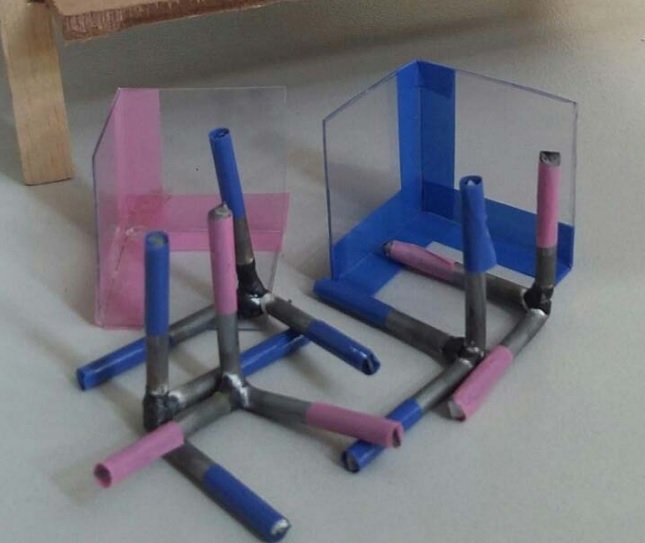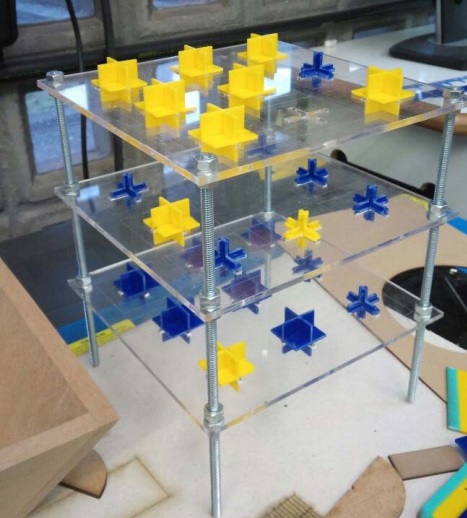PLAXIS
The Plaxis game was developed by students who took MAP2001 - Mathematics, architecture and design - in 2017, an option open to IME and FAU students. The name Plaxis came from a mixture of plan + axis, which is nothing more than a combination of the words plano and axis, respectively.
The process of creating this 3D game was based on a board game called Mijnlieff. During the game, each of the two players will receive four different types of pieces, which somehow interfere with the opponent's move.

After some problems regarding the game time and its gameplay, some adaptations made the game very similar to a 3D Tic Tac Toe. In this way, the player who makes a line of three pieces first wins the game, taking into account that the moves are always based on the piece played previously.
This type of 3D game allows people to develop spatial perception in a simple, dynamic and fun way. During the games, they can better understand how the relationship of axes and planes that are acting on a piece in a certain place is given, in addition to being able to see lines of three inside the cube formed by the board.

PLAXIS' RULES
The goal is to be the first to get three pieces of your color aligned diagonally, horizontally or vertically in relation to all planes.
Initially, each player chooses a color and receives the 16 pieces of the chosen color. The person who starts the game can place one of his pieces on any square. The next moves will be guided by the last piece placed.
There are two pieces that can be placed:
- Axes indicator: when placing this piece on the board, the next player is obliged to place the next piece on one of the three perpendicular axes that intersect the previously chosen square.
- Plane blocker: when placing this piece on the board, the next player is prevented from placing the next piece on the three planes perpendicular to each other that intersect the previously chosen square. The next player may place the piece on any square except the off-limits.
An important note: if a player places a piece in a certain place that leaves his opponent with nowhere to place his piece, he plays again, being able to place his piece in any free space.
